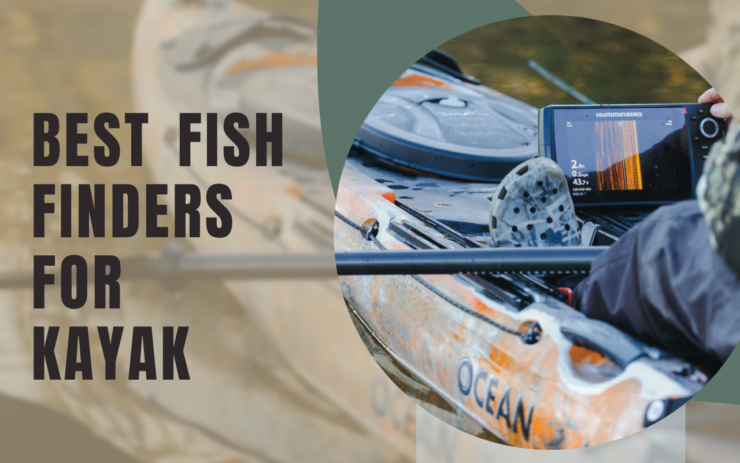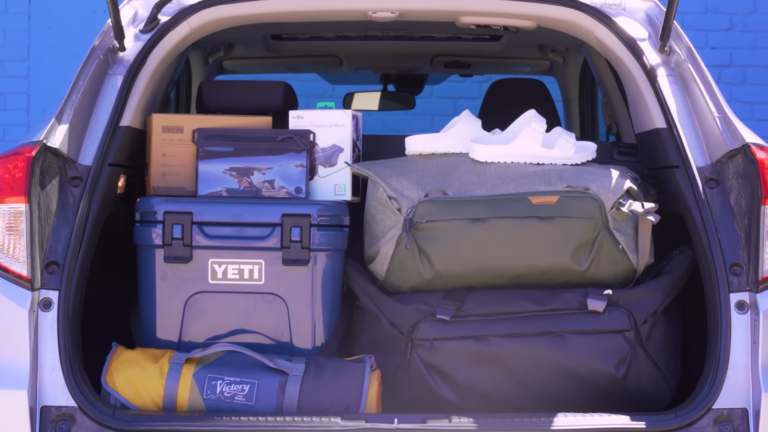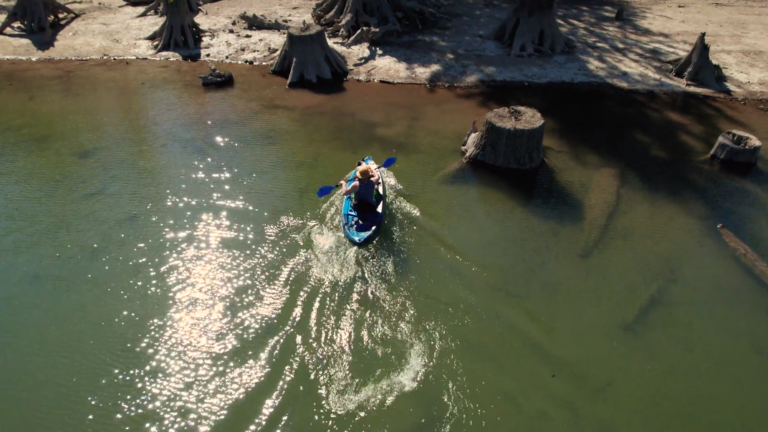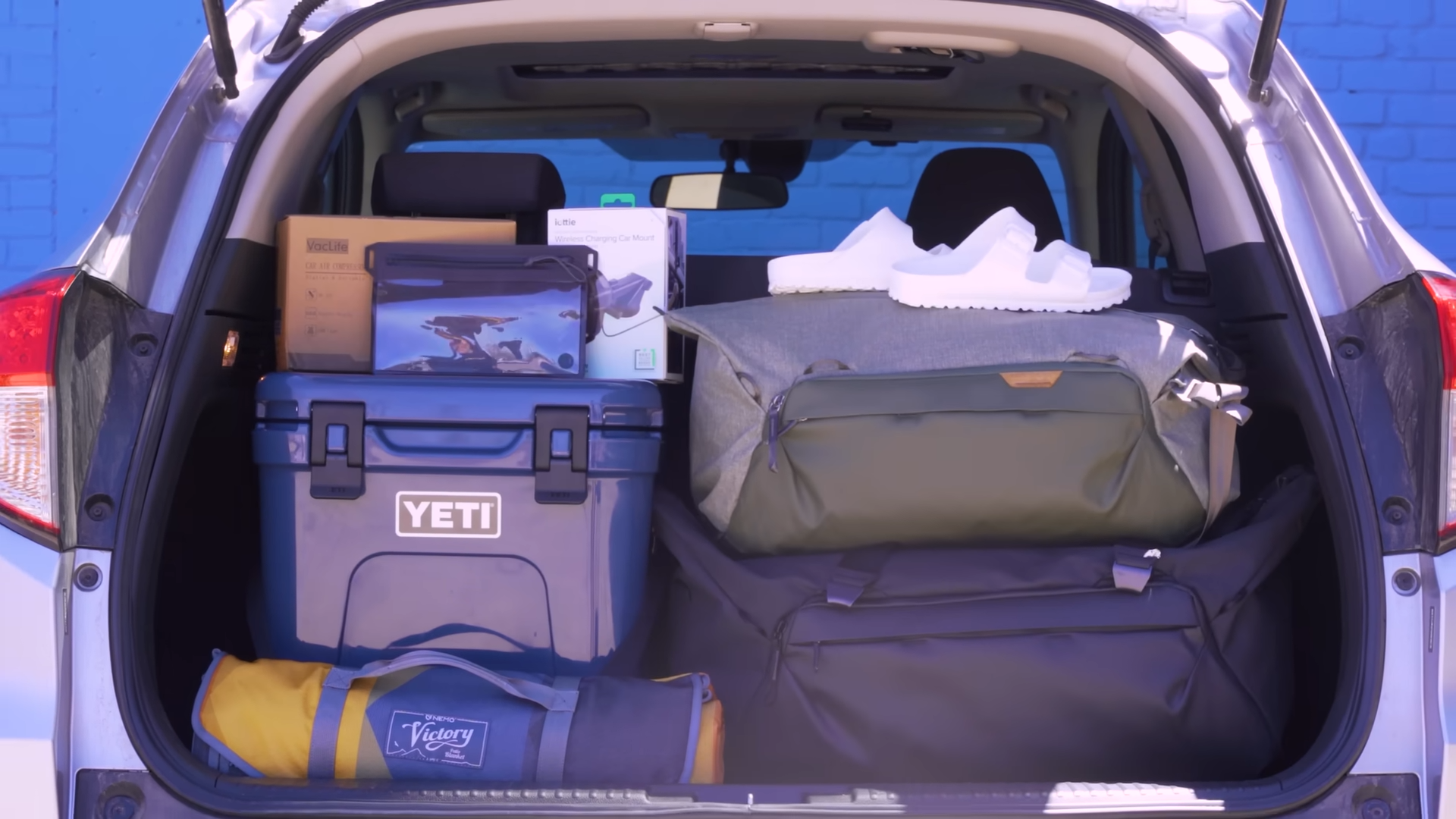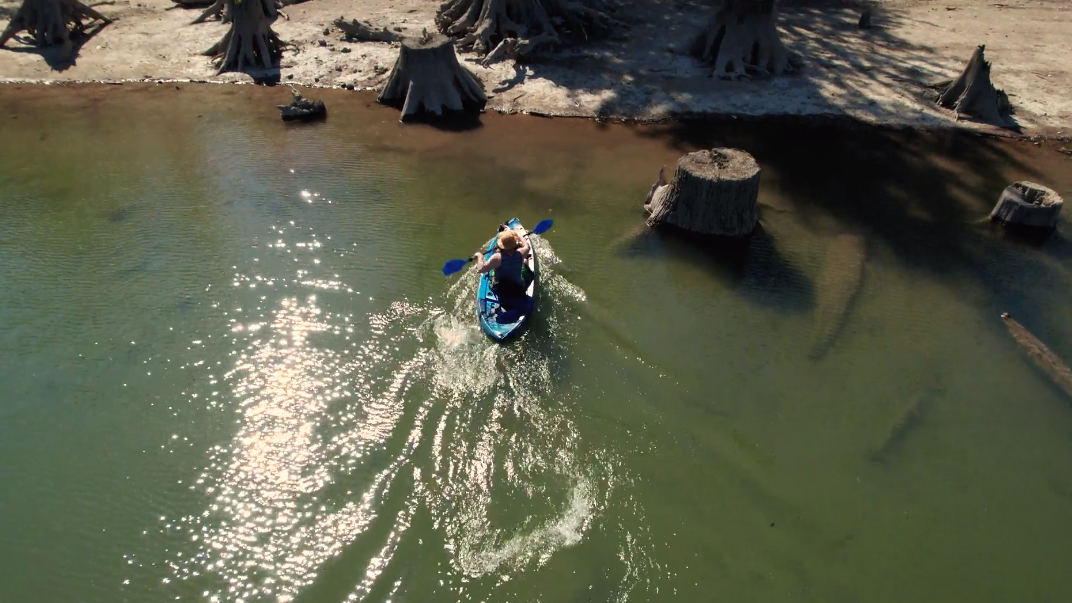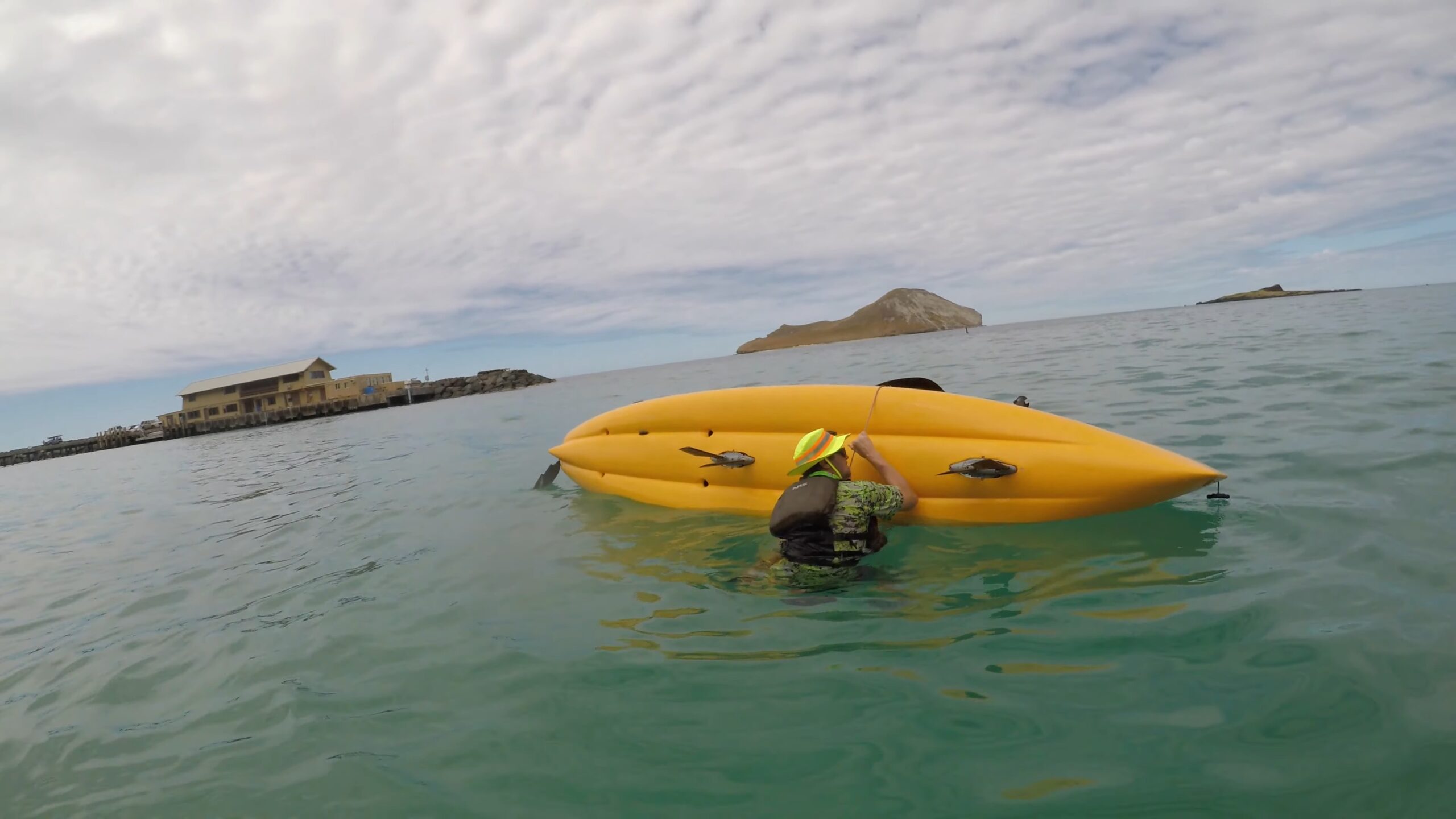Welcome to the wonderful world of fishing! In the modern era, fishing is a beloved activity that has evolved into a sport, and as a recreational pursuit that brings us closer to nature’s wonders.
When it comes to combining fishing with the thrill of kayaking, the possibilities become even more enticing. Kayaks offer anglers an optimal way to get up close and personal with their catch, creating unforgettable moments on the water. They have truly become fisherman’s best companions.
Contemporary anglers are raving about a game-changing tool that takes their fishing experience to new heights. Let me introduce you to the “Best Fish Finders For Kayak” – the ultimate gear that’s revolutionizing how we fish from our kayaks. Join me as we explore these incredible gadgets, designed to enhance your fishing adventures and bring you closer to the fish than ever before. So, let’s dive in and discover the wonders that await!
Table of Contents
ToggleTechnology in Kayak Fishing
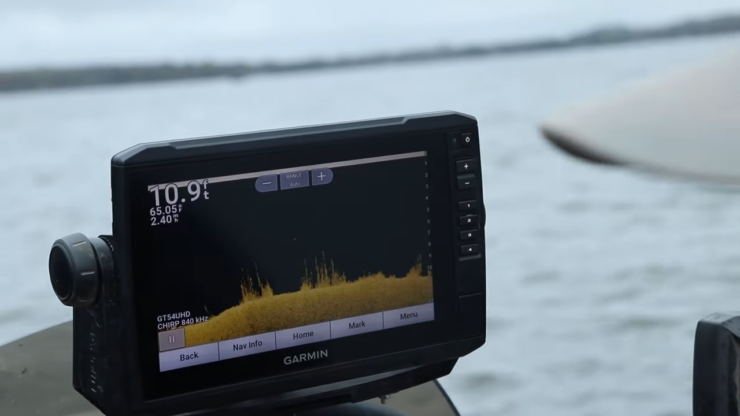
Just like in many other aspects of life, technology has found its way into the realm of fishing, making our angling experiences even more fascinating. Kayak fishing, in particular, offers the perfect canvas for integrating innovative gadgets that add ease and excitement to our fishing adventures.
One essential piece of technology that has become a favorite among anglers is the GPS system. With GPS, we can effortlessly navigate to specific fishing spots and track the movement of fish, all while recording valuable data about our fishing trips. It’s all about convenience, making our fishing trip more efficient and productive.
Weather forecasting tools are another game-changer. Armed with handheld weather radios and smartphone apps, we can stay informed about current and forecasted weather conditions. Safety and success in fishing rely on staying ahead of storms and navigating around them smartly.
While traditional reels have their charm, modern times call for something even more efficient. Electric reels, powered by batteries or motors, are gaining popularity. They aid fishermen in reeling in their catch with ease, proving particularly valuable when targeting larger or more powerful fish.
To take it up another notch, there are automatic hook setters. These nifty devices attach to the fishing line and automatically set the hook when a fish takes the bait. They’re a real boon for both inexperienced anglers and those trying to catch fast-moving or elusive fish.
Now, here comes the most popular and exciting device that contemporary anglers use on their kayaks – the fish finder. As the name suggests, this incredible tool helps us locate fish with precision. In the following sections, we’ll delve deeper into the wonders of fish finders and explore how they revolutionize our kayak fishing experiences. So, buckle up as we embark on this thrilling journey to enhance our angling prowess!
What Are Fish Finders?
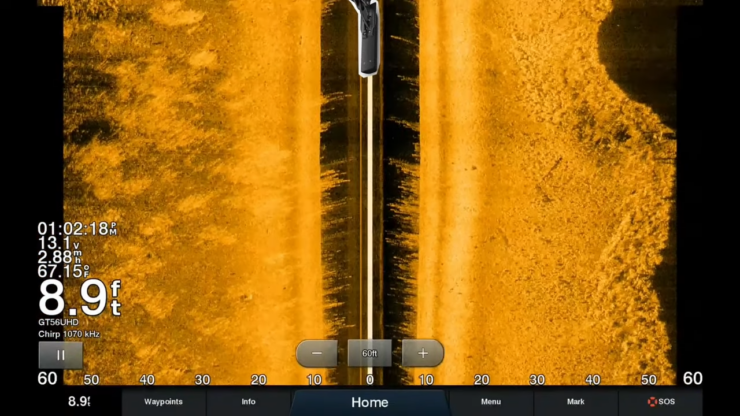
Here’s how they work: Fish finders utilize sonar technology to emit sound waves, also known as “pings,” into the water. These waves travel through the depths and bounce back after encountering various objects, such as fish, rocks, or the bottom of the water body. The device then cleverly captures the returning echoes of these pings and transforms them into a visual display on the screen, giving us a comprehensive view of what lies below our kayak.
The display screen showcases an underwater world full of detail, revealing the exact location and size of any fish that the fish finder detects. Some fish finders go the extra mile, providing additional information such as water depth, temperature, and the structure of the bottom. Think of it as a magic radar that unveils the hidden secrets of where the fish are hiding.
You’ll be thrilled to know that fish finders are easily mountable on any kayak and can be powered by batteries or the boat’s electrical system. They also pair wonderfully with GPS systems, helping us locate those perfect fishing spots with ease.
Now, you might be wondering if fish finders are exclusively for seasoned experts. Fear not! These nifty gadgets are equally valuable for both recreational and professional anglers. They significantly increase our chances of success by providing real-time insights into fish location and movement.
Whether you’re a seasoned pro or just starting your fishing journey, a fish finder is a fantastic tool to have. It aids in navigating unfamiliar or shallow waters and helps us steer clear of underwater obstacles. So, no matter who you are or how often you venture into the fishing world, a fish finder is a must-have companion that will surely boost your fishing endeavors. Trust me; you won’t want to set sail without one!
Top Fish Finder for Anglers / Our Picks
Now that you have a more extensive knowledge of fish finders, why you may need them, and what types exist on the market, it is high time we talked about the best ones available right now. All of these are perfect for kayak use and will surely make your paddling and fish-catching sessions more enjoyable.
1. Lowrance HOOK Reveal 5X SplitShot
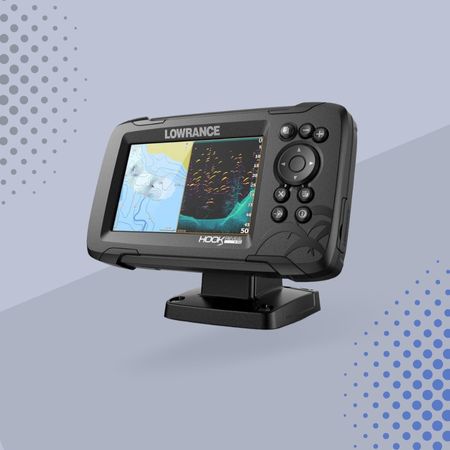
When it comes to finding the perfect fish finder, let me tell you, the Lowrance HOOK Reveal 5X SplitShot stole my heart! Countless kayak anglers swear by this gem from the trusted Lowrance brand, and now I know why. From the moment I laid my eyes on its 5″ waterproof screen, I was hooked. And the best part? Its user-friendly buttons made operating it an absolute pleasure, even during my exciting fishing expeditions.
This fish finder truly understands the needs of kayak fishermen like me. Its CHIRP and DownScan signals provided me with accurate readings, making sure I never missed a potential catch. Mounting it was a breeze, fitting perfectly in the scupper, and it stayed firmly in place throughout my adventures. Plus, the added GPS functionality and waypoint markings were a game-changer, keeping me on track and giving me full control of my kayak’s speed and distance.
With the Lowrance HOOK Reveal 5X SplitShot by my side, I felt like a more confident and capable kayak angler than ever before!
2. Garmin ECHOMAP UHDCV
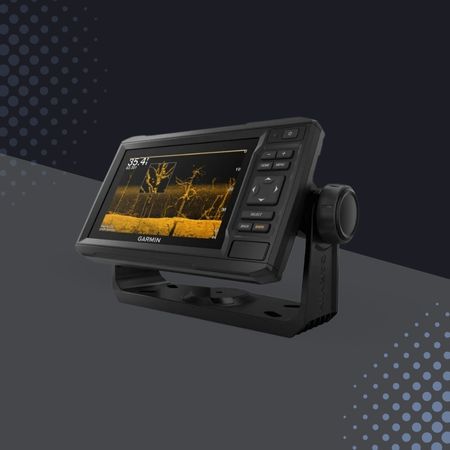
The Garmin ECHOMAP UHDCV – a true treasure for kayak anglers like me. This two-in-one wonder has it all – a high-quality fish finder paired with a top-notch GPS system. Talk about saving space on my kayak dashboard – this single device does the trick! With accurate fish locations and detailed navigation charts, it’s like having my own personal fishing and navigation guide right at my fingertips.
The 7″ touch screen is a real game-changer, making everything easy to read, even under direct sunlight, thanks to its anti-glare display. And I must say, the buttons were a real lifesaver when my fingers got wet or muddy during my fishing adventures. The vivid display with its almost three-dimensional imagery was a sight to behold, making it a joy to track fish and navigate around obstacles.
The frequent updates to the navigation charts and the ability to edit maps with custom information truly personalized my fishing journeys. Oh, and let’s not forget the accompanying smartphone app, which added an extra layer of convenience. The only small drawback? It’s a bit of a splurge, but trust me, the investment is worth every penny for the fantastic fishing experiences it brings to the table.
3. Humminbird Helix 7 CHIRP MEGA Side Imaging GPS
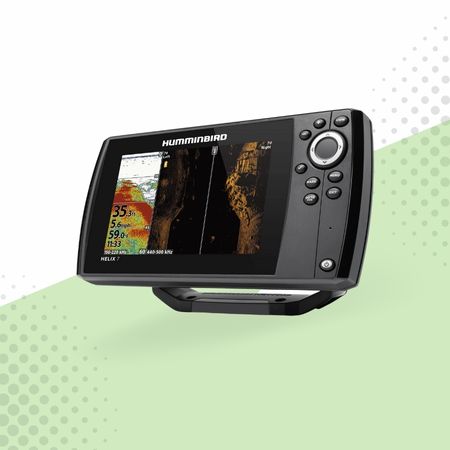
The Humminbird Helix 7 CHIRP MEGA Side Imaging GPS is a kayak angler’s dream come true! It’s like stepping into a whole new world of fish finding with its MSI (MEGA Side Imaging) capabilities. If you’ve ever wondered what’s happening around your kayak, this fish finder is your answer! The strong sonar signals create stunning imagery, revealing the underwater surroundings in such detail that I could easily spot individual fish and different species on its crystal-clear 7″ TFT display. It’s like having my own underwater detective guiding me to the best fishing spots!
The Helix 7 truly stands out with its Dual Spectrum CHIRP – not one, but two sonar signals working together to deliver even more detailed and accurate readings. The display is a true marvel, almost like a 3D experience, making it a joy to explore the underwater world. And with readings of 125 feet on both sides and below (thanks to the MEGA Down Imaging), I never miss a thing. Plus, the added convenience of the basic navigation map, bathymetric chart, and speed monitoring makes it a complete fishing package.
Trust me, this fish finder comes with everything you need, right out of the box, including all the mounting hardware and a power cable. It’s the ultimate companion for any serious kayak angler, taking fishing to a whole new level of excitement and discovery!
4. Deeper Chirp Castable Portable Fish Finder
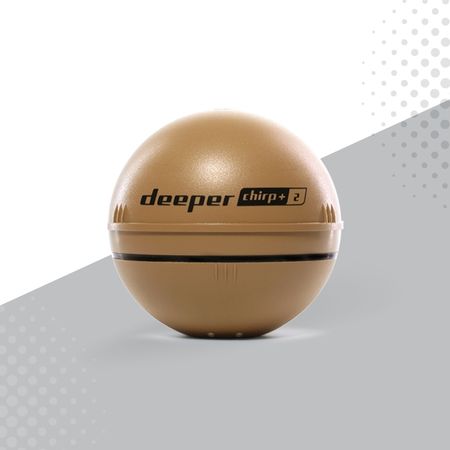
Let me introduce you to a real gem in the fishing world – the Deeper Chirp Castable Portable Fish Finder. Trust me, this one is unlike anything I’ve seen before, and it’s all about portability, ease of use, and an extra dose of fun. The concept is genius and simple: a golf-ball-sized transducer attached to a fishing line, cast into the water right from my kayak. But here’s the best part – the ball is equipped with WiFi, sending all the stunning underwater images straight to my smart device through a user-friendly app. Talk about being unique and having a fishing experience like no other!
Now, let’s talk convenience – there’s no need for an actual display fish finder because this nifty gadget feeds everything to my smartphone. The WiFi signal works like a charm at distances of up to 330 feet, matching the transducer’s impressive depth readings. And let me tell you, having all the information displayed on my smartphone screen is an absolute delight.
It’s clean, clear, and incredibly convenient, making my fishing adventures a breeze. And if that wasn’t enough, the Deeper brand also allows anglers to share their images and information on their network, fostering a community of like-minded fishing enthusiasts. If you’re looking to take fishing to a whole new level of excitement, the Deeper Chirp Castable Portable Fish Finder is the way to go!
5. HawkEye Fishtrax 1C
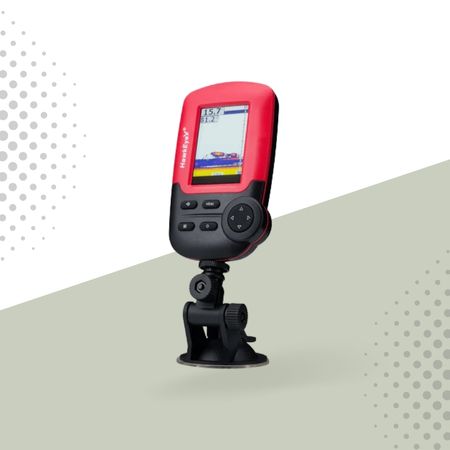
The HawkEye Fishtrax 1C – a simple yet charming fish finder that stole my heart. It may be small, with only a 2.75″ display, but its compact and handheld design won me over with its minimalistic approach. The push-button operation and LED backlight on the glare-free display make it a breeze to use, even when the sun is shining bright. Plus, it’s so easy to get accurate readings, reaching depths of up to 240 feet, thanks to its reliable sonar sensor that effortlessly mounts to my kayak and floats alongside or behind.
But wait, there’s more to love! This little gadget is not just about fish identification – it goes above and beyond with high-definition imagery that aids in navigating around potential hazards. Plus, the programmed false sonar readings are kept to an absolute minimum, giving me confidence in the accuracy of the information.
And here’s the fun part – the audible alarm settings that alert me when there’s a fish right under my kayak. Talk about excitement! With its reliability, easy mounting, and budget-friendly price, the HawkEye Fishtrax 1C has become my go-to fishing companion that never fails to deliver joy and adventure on my fishing journeys.
Buyers’ Guide
Now, It’s essential to know the ins and outs of these devices before making a decision, and this section of the guide has got you covered!
First off, there are different types of fish finders, each with its own set of applications and features. Understanding these distinctions will help you pick the one that perfectly complements your fishing style and tactics. Let’s explore:
Standalone Fish Finder
The basic model, the standalone fish finder, is a fantastic option for those who prefer a simple and affordable setup. It’s a self-contained unit that mounts effortlessly on your kayak. With its display and transducer, you’ll be able to spot fish lurking beneath the water’s surface, all without any extra fuss.
Combination Units
For seasoned anglers who like to multitask like pros, combination units are the way to go. These fish finders come with the added perk of being GPS devices as well. You’ll not only get a clear view of the underwater environment but also access to navigational maps. This makes it a popular choice for experienced anglers who want to master the art of fishing while expertly navigating their boat.
Networked Finders
Are you ready to take your fishing game to the next level? Networked finders are the top choice for competitions and dedicated anglers. These smart devices connect to various networks and other fish finders in the area, even linking up with boat sensors. The result? A comprehensive view of the underwater world, utilizing data from multiple transducers. It’s like having a fishing intelligence network at your disposal.
Down Imaging and Side Imaging Finders
For those who seek ultimate clarity and precision, down imaging and side imaging finders are a dream come true. They come with special transducers that emit high-frequency sonar signals either directly below or in cone-shaped patterns to the sides. This technology provides a detailed image of the environment, perfect for targeting specific fish. If you want to see what lies deep below or off to the sides, these are the ultimate companions for your kayak fishing ventures.
FAQ
What are fish finders, and how do they work?
Fish finders are devices that utilize sonar technology to locate fish underwater. They emit sound waves, which bounce back upon encountering objects like fish or rocks, and this information is then displayed on the screen, allowing anglers to see the exact location of the fish.
Can fish finders be used by both professional and recreational anglers?
Yes, fish finders are valuable for both professional and recreational anglers. They increase chances of success by providing real-time insights into fish location and movement, making them a fantastic tool for all levels of fishermen.
What types of fish finders are available?
Fish finders come in various types, including standalone units, combination units with GPS, networked finders that connect to multiple devices, and down and side imaging finders that provide a detailed view of the underwater environment.
Are there any fish finders that are portable and can be used with a smartphone?
Yes, products like the Deeper Chirp Castable Portable Fish Finder are designed for portability and can be used with smartphones. The information is sent to your smart device via WiFi, allowing you to view the underwater images on your phone.
How do I choose the right fish finder for my kayak fishing adventures?
Choosing the right fish finder depends on your needs, fishing style, and budget. Consider factors like the type of imaging you require (down or side), whether you need GPS functionality, the size and display of the screen, and additional features that may enhance your fishing experience.
Conclusion
The wonderful world of fishing is indeed evolving, and with the advent of technology, it’s offering anglers a whole new dimension of excitement, convenience, and success. Fish finders, in particular, have transformed the way we approach fishing from kayaks. Whether you are an experienced angler or just starting your fishing journey, these innovative gadgets cater to all needs, enhancing our connection with nature’s underwater wonders.
The article provides an insightful journey into the realm of fishing technology, shedding light on the must-have tools and their applications. From GPS systems to electric reels and weather forecasting tools, the fishing adventure has never been more thrilling and satisfying. Embracing these tools not only enriches our experiences but also fosters a community of like-minded enthusiasts, all drawn together by the joy of discovery and the thrill of the catch.
Adelaide Gentry, a seasoned kayaking enthusiast and expert, is the driving force behind KayakPaddling.net. With over a decade of experience navigating the world’s most challenging waterways, Adelaide combines her passion for adventure with a deep knowledge of kayaking to provide insightful and practical guidance for paddlers of all levels.
Related Posts:
- Heavy Duty Fishing: 11 Best Rods And Reels For Big Fish 2024
- 12 Best Motorized Kayak 2024 - Start Your Aquatic Adventure!
- 10 Best Saltwater Fishing Boats - Ultimate Angling Adventure
- 16 Best Kayak For Beginners 2024 - Kayaking Adventure Gear
- 9 Best Backpacking Fishing Rods 2024 - Lightweight…
- 10 Best Fish Finders Under $200 2024 - Top Affordable Picks

